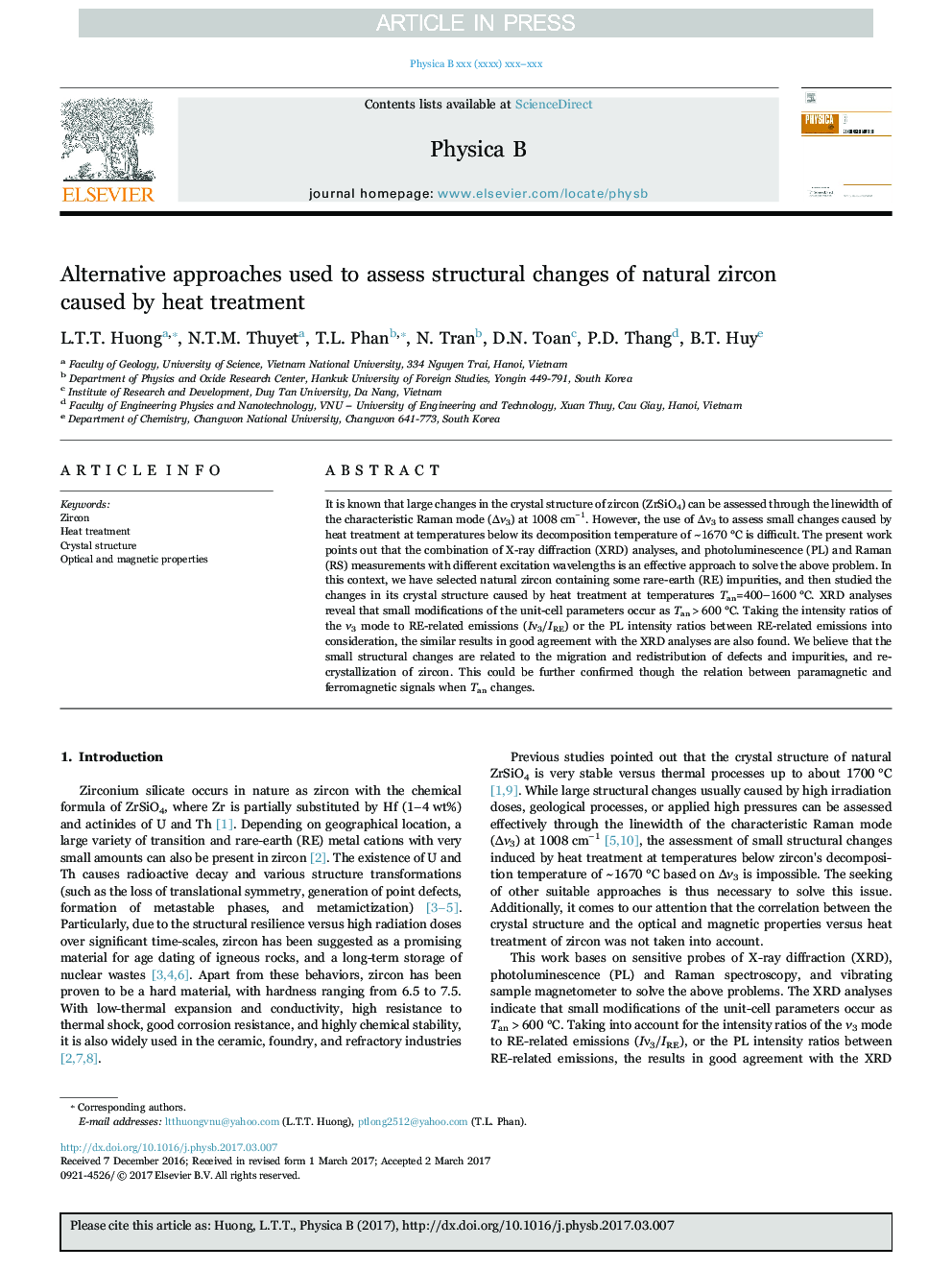| Article ID | Journal | Published Year | Pages | File Type |
|---|---|---|---|---|
| 8161394 | Physica B: Condensed Matter | 2018 | 6 Pages |
Abstract
It is known that large changes in the crystal structure of zircon (ZrSiO4) can be assessed through the linewidth of the characteristic Raman mode (Îν3) at 1008 cmâ1. However, the use of Îν3 to assess small changes caused by heat treatment at temperatures below its decomposition temperature of ~1670 °C is difficult. The present work points out that the combination of X-ray diffraction (XRD) analyses, and photoluminescence (PL) and Raman (RS) measurements with different excitation wavelengths is an effective approach to solve the above problem. In this context, we have selected natural zircon containing some rare-earth (RE) impurities, and then studied the changes in its crystal structure caused by heat treatment at temperatures Tan=400-1600 °C. XRD analyses reveal that small modifications of the unit-cell parameters occur as Tan>600 °C. Taking the intensity ratios of the ν3 mode to RE-related emissions (Iν3/IRE) or the PL intensity ratios between RE-related emissions into consideration, the similar results in good agreement with the XRD analyses are also found. We believe that the small structural changes are related to the migration and redistribution of defects and impurities, and re-crystallization of zircon. This could be further confirmed though the relation between paramagnetic and ferromagnetic signals when Tan changes.
Related Topics
Physical Sciences and Engineering
Physics and Astronomy
Condensed Matter Physics
Authors
L.T.T. Huong, N.T.M. Thuyet, T.L. Phan, N. Tran, D.N. Toan, P.D. Thang, B.T. Huy,
